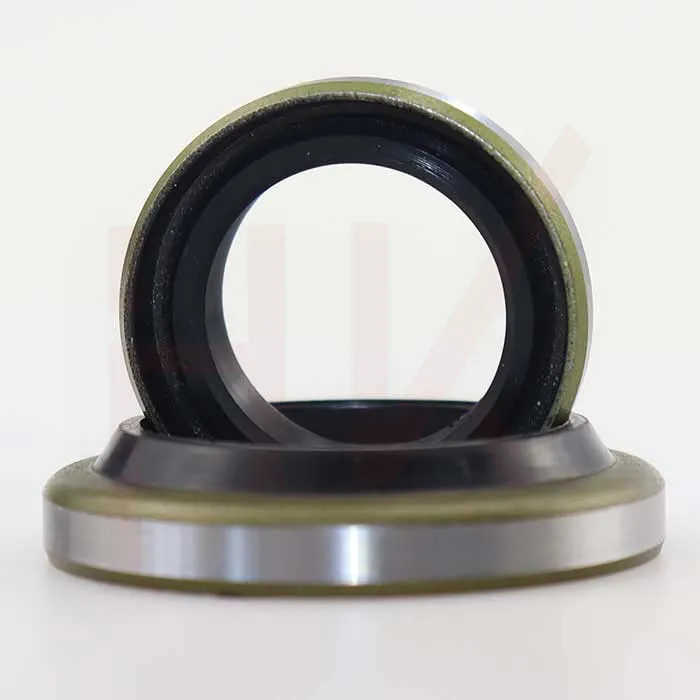നവം . 08, 2024 18:03 Back to list
wiper rod seal
Understanding Wiper Rod Seals Their Importance and Applications
Wiper rod seals are essential components in various hydraulic and pneumatic systems. These seals play a critical role in preventing the ingress of contaminants and the egress of hydraulic fluids, ensuring the longevity and efficiency of machinery. This article delves into the functionality, significance, types, and best practices related to wiper rod seals.
Functionality of Wiper Rod Seals
Wiper rod seals serve as a barrier that prevents dirt, dust, and other contaminants from entering the cylinder while simultaneously hindering the escape of hydraulic fluid. They are strategically positioned at the outer end of the cylinder assembly, positioned in front of the main sealing element. This placement is critical as it allows the wiper seal to clean the rod as it extends and retracts, keeping the main seal unhindered and functional.
The primary function of wiper rod seals includes 1. Contamination Prevention By wiping away contaminants, the seal protects the internal components of the hydraulic system, such as pistons and cylinders, from abrasive materials that could lead to wear and tear. 2. Fluid Retention After the contaminants are wiped away, the seal retains hydraulic fluid within the system, maintaining pressure and ensuring efficient operation. 3. Performance Maintenance By preventing contamination and fluid loss, wiper rod seals help maintain the overall performance and reliability of machinery, reducing downtime for repairs.
Importance of Wiper Rod Seals
The significance of wiper rod seals cannot be understated, especially in environments where machinery operates under extreme conditions. In construction, agriculture, and manufacturing industries, hydraulic systems are exposed to dirt, mud, water, and other harsh contaminants. A failure in the wiper seal can lead to catastrophic equipment failure, expensive repairs, and extended downtime.
Moreover, wiper seals contribute to the safety of operations by maintaining adequate pressure within hydraulic systems. Pressure loss can lead to uncontrolled movements of machinery, posing risks to operators and bystanders alike. Thus, ensuring the integrity of wiper rod seals is vital for not only efficiency but also safety.
Types of Wiper Rod Seals
wiper rod seal

There are several types of wiper rod seals designed for different applications. Some of the most common types include
1. Rubber Wiper Seals Made from various elastomers, rubber wipers are commonly used due to their excellent flexibility, resilience, and resistance to wear. 2. Polyurethane Wiper Seals Known for their superior resistance to abrasion and tear, polyurethane wipers are ideal for heavy-duty applications where higher performance is required. 3. Metal Wiper Seals These seals incorporate a metal retaining ring to provide additional stability and protection against extreme conditions, often found in industrial applications.
The choice of material and design largely depends on the application, operating conditions, and the types of fluids involved.
Best Practices for Wiper Rod Seal Maintenance
To ensure the longevity and performance of wiper rod seals, regular maintenance and inspection are recommended. Here are some best practices
1. Regular Inspection Routine checks for wear and damage can help identify issues before they escalate. Look for signs of cracking, tearing, or degradation of the seal material. 2. Keep Rods Clean Regularly cleaning the rods can help prevent contaminants from accumulating, reducing the strain on wiper seals. 3. Use Appropriate Lubricants When necessary, applying lubricants can help extend the life of the wiper seals; however, ensure that the lubricant is compatible with the seal material. 4. Proper Installation Ensure that seals are installed correctly to avoid premature failure. Following manufacturer guidelines during installation is crucial.
Conclusion
Wiper rod seals are integral to the efficiency and durability of hydraulic and pneumatic systems. By preventing contamination and retaining hydraulic fluid, these seals play a significant role in ensuring smooth and safe machinery operation. Understanding their functionality, significance, types, and maintenance practices can empower operators and maintenance personnel to enhance the productivity and safety of their equipment. Investing in quality wiper rod seals and adhering to maintenance protocols ultimately leads to long-term operational success.
-
The Trans-formative Journey of Wheel Hub Oil Seals
NewsJun.06,2025
-
Graphene-Enhanced Oil Seals: Revolutionizing High-Pressure Oil Sealing
NewsJun.06,2025
-
Future of Hydraulic Sealing: Advanced Intelligent TCN Oil Seals
NewsJun.06,2025
-
Don’t Let a Broken TCV Oil Seal Ruin Your Day
NewsJun.06,2025
-
Bio-Inspired Dust Seals for Better Sealing Performance
NewsJun.06,2025
-
Biodegradable and Sustainable Hydraulic Seal Materials
NewsJun.06,2025
-
Top Oil Seal Solutions for Your Industrial Needs
NewsMay.22,2025
Products categories
















